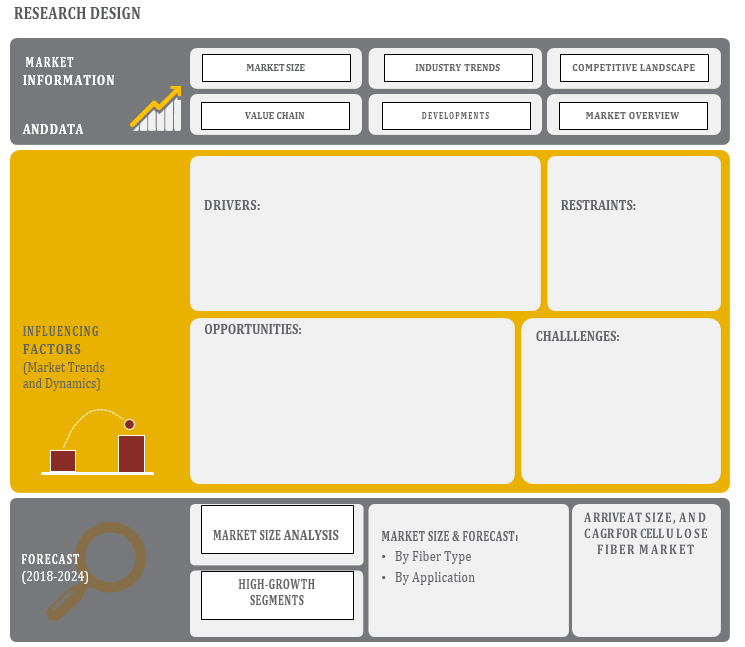OVERVIEW
The Global Heat Exchangers Market is calculated to reach $25.16 billion by 2024, at a CAGR of 9.12% during the forecast period 2019-2024. Heat exchanger is a major equipment or device as far as heat transfer and energy conservation is concerned. It is a device that transfers energy between two or more process fluids. Various types of heat exchangers have been developed for a wide range of domestic and industrial applications such as steam power plant, chemical processing plants, building heat and air conditioning systems, transportation power systems, and others.








TABLE OF CONTENT
1 Global Heat Exchangers Market – Overview
1.1 Study Objectives
1.2 Market Definition
1.3 Study Scope
1.3.1 Markets Covered
1.3.2 Geographic Scope
2 RESEARCH METHODOLOGY
2.1 Research Data
2.1.1 Secondary Data
2.1.1.1 Key Data From Secondary Sources
2.1.2 Primary Data
2.1.2.1 Key Data From Primary Sources
2.1.2.2 Key Industry Insights
2.1.2.3 Breakdown of Primaries
2.2 Market Size Estimation
2.2.1 Bottom-Up Approach
2.2.2 Top-Down Approach
2.3 Market Breakdown and Data Triangulation
2.4 Research Assumptions
3 Global Heat Exchangers Market – Executive Summary
3.1 Market Revenue, Market Size and Key Trends by Company
3.2 Key Trends by type of Application
3.3 Key Trends segmented by Geography
4 Global Heat Exchangers Market – Comparative Analysis
4.1 Product Benchmarking – Top 10 companies
4.2 Top 5 Financials Analysis
4.3 Market Value split by Top 10 companies
4.4 Patent Analysis – Top 10 companies
4.5 Pricing Analysis
5 Global Heat Exchangers Market – Industry Market Entry Scenario
5.1 Regulatory Framework Overview
5.2 New Business and Ease of Doing business index
5.3 Case studies of successful ventures
5.4 Customer Analysis – Top 10 companies
6 Global Heat Exchangers Market – Market Forces
6.1 Introduction
6.2 Market Dynamics
6.2.1 Drivers
6.2.1.1 Surging Prices of Energies
6.2.1.2 Industrial Expansions Happening Rapidly in The Developing Markets Of APAC
6.2.1.3 Stringent Environmental Regulations
6.2.1.4 Growth in Industrial Activities and Increase in HVACR Deployments
6.2.1.5 Technological Advancements and Developments Happening in The Heat Exchangers
Market
6.2.2 Opportunities
6.2.2.1 Trend of Growing demand for nuclear power generation
6.2.2.2 Large aftermarket Opportunities for heat exchangers
6.2.3 Challenges
6.2.3.1 Europe And North American Markets Experiencing Low Growth
6.2.3.2 Lack of Awareness About Energy Efficiency
6.2.3.3 Fluorinated Greenhouse Gas Regulations
6.3 Porters Analysis of Market
6.3.1 Bargaining power of suppliers
6.3.2 Bargaining powers of customers
6.3.3 Threat of new entrants
6.3.4 Rivalry among existing players
6.3.5 Threat of substitutes
7 Global Heat Exchangers Market – Strategic Analysis
7.1 Value Chain analysis
7.2 Product Life Cycle
7.3 Supplier and distributor analysis (Market share and product dealing strategies)
8 Global Heat Exchangers Market – By Application
8.1 Food & Beverage
8.2 Power Generation
8.3 Paper & Pulp
8.4 Chemical
8.5 Petrochemical and Oil & Gas
8.6 HVACR
8.7 Others
9 Global Heat Exchangers Market – By Type
9.1 Plate & frame
9.2 Air Cooled
9.3 Shell & Tube
9.4 Others
10 Global Heat Exchangers Market – By Geography (Market Size – & million/billion)
10.1 Introduction
10.2 North America
10.2.1 US
10.2.2 Canada
10.2.3 Mexico
10.3 Europe
10.3.1 U.K
10.3.2 Germany
10.3.3 Italy
10.3.4 France
10.3.5 Spain
10.3.6 Rest of Europe
10.4 Asia-Pacific
10.4.1 China
10.4.2 Japan
10.4.3 India
10.4.4 South Korea
10.4.5 Rest of APAC
10.5 Rest of the World
10.5.1 South America
10.5.2 Middle East
10.5.3 Africa
11 Global Heat Exchangers Market – Entropy
11.1 New product launches
11.2 M&A’s, collaborations, JVs and partnerships
12 Global Heat Exchangers Market Company Profile (Key Players)
12.1 Market Share, Company Revenue, Products, M&A, Developments
12.2 API Heat Transfer
12.3 Brask, Inc.
12.4 Danfoss A/S
12.5 Güntner GmbH & Co. KG
12.6 Kelvion Holding GmbH
12.7 Koch Industries, Inc.
12.8 Lytron Inc.
12.9 Thermofin
12.10 Xylem Inc.
12.11 HRS Heat Exchangers
12.12 Company 11 & more
“* Private Company Financials would be provided on our best efforts”
13 Global Heat Exchangers Market – Appendix
13.1 Sources
13.2 Abbreviations










